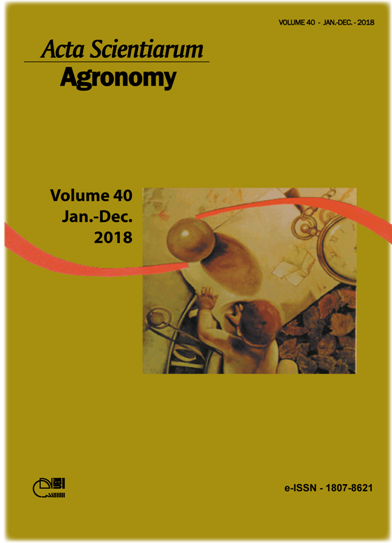<b>Periods of weed interference in chickpea grown under different doses of nitrogen fertilizer topdressing
Resumo
Weed interference can reduce chickpea growth and, therefore, productivity depending on the period of coexistence and the nutritional status of the crop, among other factors. A study was performed over two crop years to estimate the critical period of weed interference (CPWI) during chickpea production under three doses of nitrogen (N) fertilizer topdressing (0, 50, and 75 kg N ha-1). The experiments were conducted at 0, 7, 14, 21, 28, 35, 42, 56, 63, and 140 days after emergence (DAE) of chickpea/weed coexistence under two conditions: initially weed-free and initially weed-infested. The presence of weeds negatively affected chickpea production and reduced yields by 70% on average regardless of N rate, rendering the crop economically unfeasible. The CPWI ranged from 5 to 76 DAE and was not affected by N topdressing up to 75 kg N ha-1 in both crop years, assuming an acceptable production loss of 5%. Although the CPWI without fertilization (0 kg N ha-1) was similar to that when fertilized with 50 and 75 kg N ha-1, the two topdressing doses increased chickpea productivity by 37% and 51%, on average, respectively.
Downloads
DECLARAÇÃO DE ORIGINALIDADE E DIREITOS AUTORAIS
Declaro que o presente artigo é original, não tendo sido submetido à publicação em qualquer outro periódico nacional ou internacional, quer seja em parte ou em sua totalidade.
Os direitos autorais pertencem exclusivamente aos autores. Os direitos de licenciamento utilizados pelo periódico é a licença Creative Commons Attribution 4.0 (CC BY 4.0): são permitidos o compartilhamento (cópia e distribuição do material em qualqer meio ou formato) e adaptação (remix, transformação e criação de material a partir do conteúdo assim licenciado para quaisquer fins, inclusive comerciais.
Recomenda-se a leitura desse link para maiores informações sobre o tema: fornecimento de créditos e referências de forma correta, entre outros detalhes cruciais para uso adequado do material licenciado.




















































